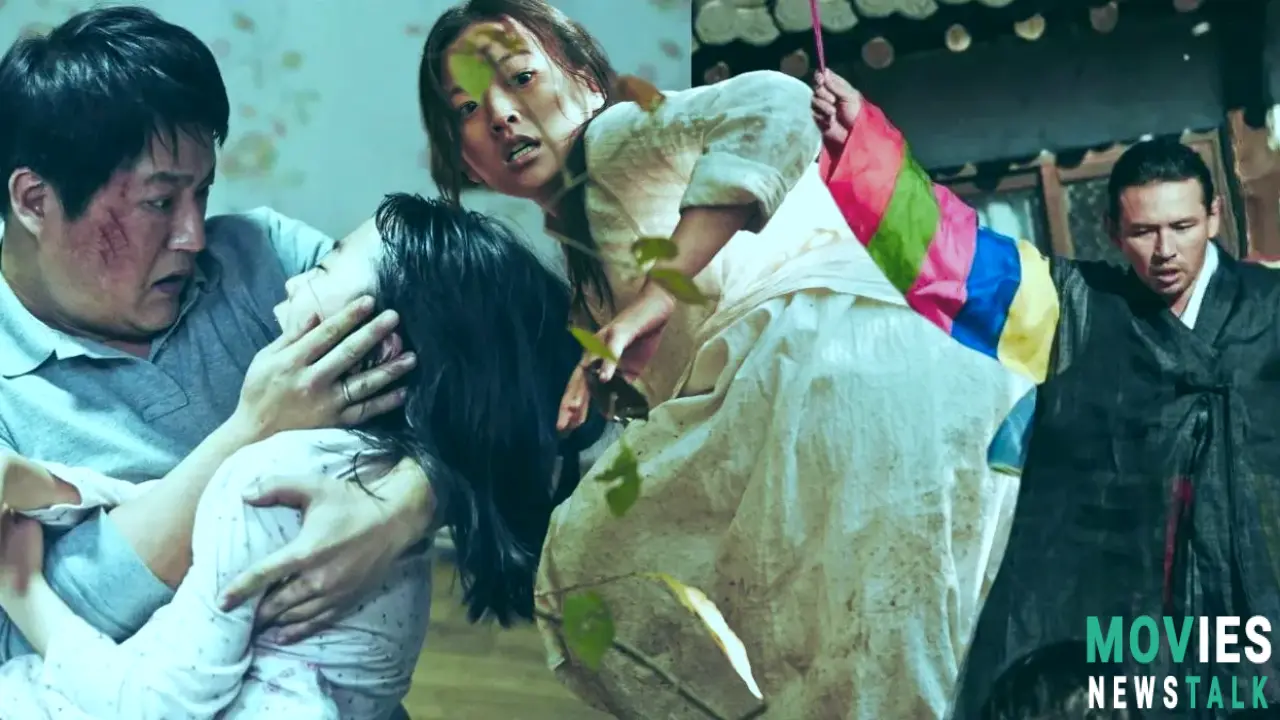The Wailing: Peeling Back the Layers of a Masterpiece of Korean Horror
The Wailing (2016), directed by Na Hong-jin, is a masterwork of Korean horror that transports audiences through a terrifying and exciting journey across a variety of horror sub-genres. With its deft use of twists and turns, this two and a half hour film keeps viewers on the edge of their seats and makes them wonder what's genuine and what isn't.
Changing Genres and Disturbing Realities
With villagers acting ferociously and hurting both themselves and others horribly, The Wailing at first glance seems like a conventional zombie or infection movie. The movie eventually turns into a terrifying tale of demonic possession as it progressively reveals its true nature. One of the most powerful plot twists in the movie is this genre-bending approach. Hyo-Jin, the daughter of the main character, gets possessed, but this isn't revealed until the very end, making viewers rethink everything they've seen and necessitating a rewatch to understand the possession plot thoroughly.
The Woman in White: A Closer Look
Moo-Myung, which translates to "no name" in Korean, is the mysterious Woman in White who appears repeatedly in the movie. She seems to be pursuing the enigmatic Stranger, a Japanese man who turns become the main suspect in the weird activities occurring in the town. A significant turn of events occurs when the Shaman, Il-Gwang, discloses that Moo-Myung is a ghost or evil spirit. As Jung-Goo, the main character, strives valiantly to save his daughter, this discovery sends him reeling.
The Trickery Character of the Outsider
At first, The Stranger is presented as the adversary, with his motivations unknown. The various objects and pictures found in his home reveal to viewers that he is the owner of several people. Even with all the evidence, there are moments in which you feel sympathy for the Stranger, especially when Jung-Goo and his comrades are pursuing him. The deliberate manipulation that is a hallmark of demonic beings gives the film's twists an additional level of complexity.
The Devil in Disguise: Revealing the Genuine Nature of the Stranger
The actual nature of the Japanese Stranger—a demon—is revealed in one of The Wailing's most unexpected twists. His only goal is to cause turmoil and strife; he takes great joy in the mayhem he causes in the little Korean village. Even though The Stranger appears to have died in an automobile accident and a fall down a mountain, he magically returns to carry out his work of possession. When the Stranger's true form is revealed in the film's climax, viewers are left feeling uneasy.
A Breach of Confidence: The Shaman's Actual Loyalty
The Shaman, who had been "helping" Jung-Goo, was actually collaborating with the demon all along, as the film's shocking conclusion makes clear. Knowing the Shaman's true loyalties, Moo-Myung curses him, making him fearful. It is unclear to viewers if the Shaman had been working with the Stranger from the start or if his allegiance changed in the last minutes after this revelation. The alternate ending, which shows the Shaman driving out with the Stranger to look for fresh victims, validates his betrayal.
The Unsettling End of The Wailing
The film's conclusion, which mirrors the sad cycle of demonic possession, goes full circle back to its starting point. Only one person survives the gruesome murders of The Stranger's victims. The Stranger keeps terrorizing new cities and people as the cycle goes on. The Wailing emphasizes the destructive power of evil and humanity's weakness, leaving a lingering sense of sadness.
A haunting movie with depth and nuance, The Wailing has a profound effect on spectators. Fans of spine-tingling horror films about demonic possession must watch it because of its complex plot, genre-defying twists, and unnerving examination of demonic possession. The movie transcends the conventions of classic horror because it manages to make the audience feel something for even the most evil characters. The Wailing is proof of the narrative's potency and its capacity to linger in the minds of viewers long after the last credits have rolled.

